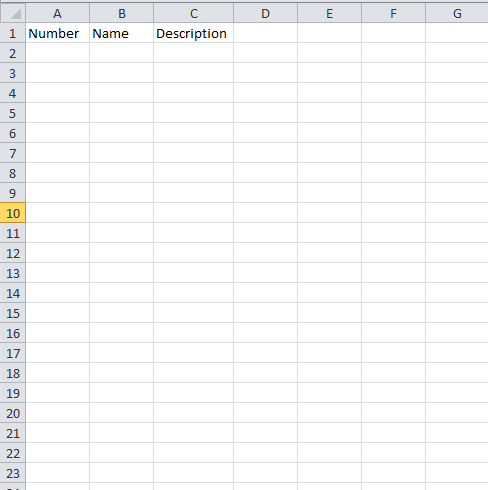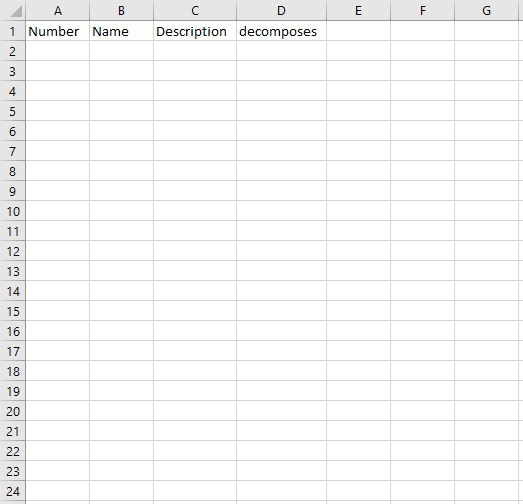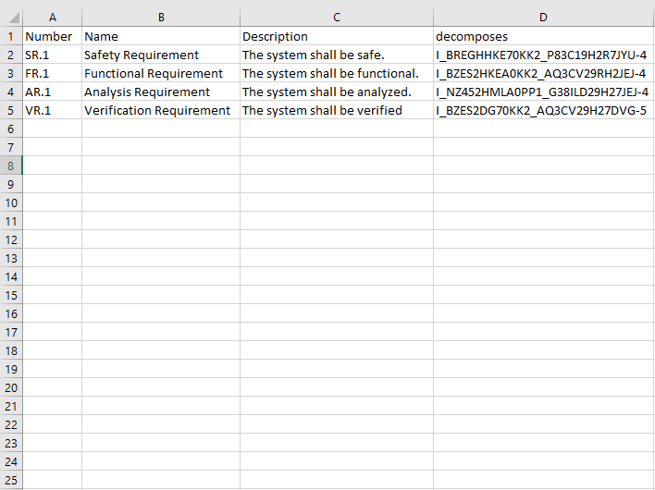Importing Microsoft Excel (.csv) Files (v4.10 & below)
Import Microsoft Excel (.csv) Files into Innoslate through the Import Analyzer.
Open the 'Import Analyzer' and select the ‘Excel (.csv)’ tab.

Select from the drop-down menu which document type you'd like the analyzer to use. This will indicate what classes for the analyzer to recall for the next step.
Select from the drop-down menu which schema-based class of entities should be created by default from importing the text. Search or scroll within the drop-down menu to find your desired class.
Select from the drop-down menus which attribute you’d like the analyzer to use when fetching existing and related entities. Search or scroll within the drop-down menus to find your desired attributes.
| None | Compilation | Document | Test Suite | |
| Default Class Options | All | All Classes, All | Statement, Requirement | Test Case |
| Fetch Existing |
Global ID, Name, Number |
Global ID, Name, Number | Global ID, Name, Number | Global ID, Name, Number |
| Fetch Related | Global ID, Name, Number | Global ID, Name, Number | Global ID, Name, Number | Global ID, Name, Number |

Drag and drop your .csv file over the drop area, or click within the drop area to browse your computer’s file system to select the file to upload.

When your ‘Analyzer Progress’ bar reaches 100 percent, ‘Done,’ click the ‘Next’ button to proceed to Step Three.

Using the ‘Custom Field Mapping’ wizard, select the entities you wish to import/migrate to Innoslate and mapping to entity attributes. Note your options here are predetermined based on the options chosed in the 'Step 1 Configure' of the Analyzer.
Then, click the ‘Next’ button to proceed to Step Four.

Verify the preview of the import is what you were expecting. To finish the import process and save the entities to your current project’s database, click the ‘Save’ button.
To go back, you can remap and modify as needed even re importing again by clicking the ‘< Prev’ button.

Importing Relationships
In order to import relationships using the CSV importer, the CSV file must be formatted in a specific way in order to be read correctly by the Import Analyzer.
- Start with a CSV with basic headers.

- Add the relationship name as a column title.

- Fill in the information as you normally would.

- Next, find the global ID of the target entity you would like to relate the entity to. There are multiple ways of doing this. One way is to look at the metadata.

- Copy and paste the Global ID into the relationship name column in the CSV.

- If the target entity is in another project, you will need to find the Project ID of the target entity. This can be found by looking at the URL.

- Enter the Global IDs into their respective columns, and if the relationships are cross-project, followed by a ‘-‘ and the project ID in the CSV. Note: The CSV Importer can handle cross-project relationships as long as the user has permission for both projects.

- Hit save when you are done, then go to the Import Analyzer. In step 1, make sure “Select the attribute you’d like analyzer to use when fetching related entities:” is set to Global ID.

- Continue with the import process as usual, and note the mapping in step 3. Make sure the relationship and Project ID is mapped correctly.

- Once Analyzer has finished, you should see the number of new and updated entities. Hit save, and you are all done.

To continue learning about Import Analyzer, Click Here.
(Next Article: Importing Innoslate Export (.inno, .xml) Files)
